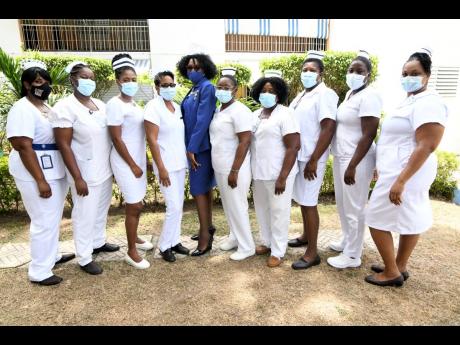Nurses and midwives: Vital to the delivery of healthcare
The World Health Organization (WHO) and the International Council of Nurses (ICN) have designated 2020 as the International Year of the Nurse and the Midwife under the theme ‘Nurses and Midwives: Vital to the Delivery of Healthcare’. This is with the attempt of recognising and celebrating the work of nurses and the many roles they fill.
As we prepare to celebrate Nurses Week, July 19-25, Director of Nursing Services at the Sir John Golding Rehabilitation Centre (SJGRC), Andrea Christie, has highlighted the work of her team and the invaluable role they play in the society. The centre was started in 1954 during an outbreak of polio and was used to house and assist those who were paralysed. Today, the 70-bed institution is a tertiary-level healthcare facility assisting Jamaicans and persons in other countries.
“We function just like any hospital, but our services are geared towards assisting persons who have physical disability because of spinal cord injury,” shared Christie, who explained that spinal cord injuries can occur through traumatic situations, including a gunshot or stab wound, and through non-traumatic injuries that could be caused through tumours and congenital conditions in children, like spina bifida and cerebral palsy.
“So, whatever it is that interferes with the function of your spinal cord that has rendered you unable to move physically, whether completely or partially, that is our service here,” she noted.
Christie is concerned, however, that persons have a misconception of the SJGRC as an infirmary or home, a belief possibly brought on by how the centre was first established. She said the centre has grown, even though the infrastructure has not.
“We are still stuck infrastructurally, but our services have expanded to cover everyone and anyone who has had any sort of physical disability; but you are assisted in such a way that you become functional members of society, and not just left to die without anyone caring for you,” she said.
Christie also noted that the misconception possibly stems from the length of admission for a patient at the facility.
“Treatment here is a long-term one as the average term of admission stay is 90 days, while in other [healthcare] facilities, you go in for a day, at most a couple weeks, and then you are discharged. Those are acute care, meaning you have recovered from that and no longer need assistance, while the more long-term care requires more intricate attention,” Christie said.
She recalled starting at the SJGRC 20 years ago after being placed there by the Ministry of Health when her training was completed. She shared that it was a culture shock because of the lack of experience during her training, plus she did not know the facility existed. Like most people, she thought it was just a place for physical therapy.
“To be honest, I was very confused when I got here because I was ready to get my hands dirty doing some ‘real’ nursing. But without the training, my colleagues and I, having an understanding of what happened with these patients, how the spinal cord fully works, we went ahead and did extensive reading on spinal cord injury and caring for these persons from a nursing perspective, and that is what we have used, in addition to our general nursing care,” Christie shared.
She recounted many recoveries from the facility, including an encounter with a former patient who walked by her on the road and whom she did not recognise. Another victory is ensuring that nurses who are employed at the facility do not have the same initial reaction as she did.
“Nurses who come here now are not going to be shocked. Due to our advocacy over the years, they have now integrated our facility into the curriculum at nursing school,” Christie said.
She added that they have devised strategies internally and externally to allow the nurses to feel involved.
“In terms of integration, we have rotated our nurses into the other general services at other institutions to work and to assist in those areas so that they maintain their general practice,” said Christie.
As a result, the SJGRC boasts multidisciplinary nurses whose various roles and responsibilities ensure that patients and caregivers are prepared physically and mentally for life after care at the facility.

